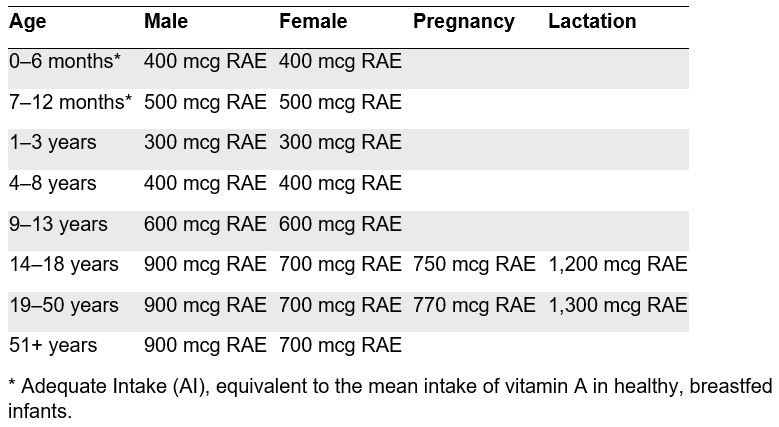Vitamin A, β-carotene And The Health Of Your Teeth And Jaws
What Vitamin A Does
As a dentist I am a big fan of vitamin A. It is necessary for proper facial development in the fetus and it helps to build strong bones and teeth. It also helps protect mucous membranes of the mouth, nose, throat and lungs; it. Other benefits include male and female reproduction, sperm and ova, eye, kidney, diaphragm, lung, aortic arch and heart development. (1)
How To Get Vitamin A From Your Diet?
True vitamin A is one of the fat-soluble vitamins (along with vitamins K2, E and D). It is most abundantly found in animal fats; especially liver, dairy, and salmon, shellfish and egg yolk, Vitamin A precursors known as provitamin A, carotenoids, and β-carotene are found in most vegetables. It is most unfortunate that FDA regulations allow food processors to label carotenes as vitamin A, as you will fid out later in this post, they are not the same.
How Much Vitamin Do You Require?
Under the FDA’s new labeling regulations for foods and dietary supplements that take effect by January 1, 2020 vitamin A will be listed only in “mcg RAE” and not IUs. The table below lists the RDA’s for various ages.
Vitamin A and Birth Defects
As I stated before, vitamin A helps the tissues of developing babies differentiate properly, however one past study reported that excess vitamin A could lead to birth defects. The study has been cited as erroneous as it under-reported the base-line level of birth defects among the population, falsely indicating that excess vitamin A causes more birth defects. A notable study found no congenital malformations among 120 infants exposed to more than 50,000 IU of vitamin A per day, a level 47,000 IU’s above the current RDA. (2) Another study looked at blood levels of vitamin A in pregnant women and found that a dose of 30,000 IU per day resulted in blood levels that had no association with birth defects. (3)
My dedicated readers already understand that I don’t recommend purified supplements as a primary go-to. Many studies show that poorer health outcomes can result from supplementation with purified vitamins, minerals and nutrients. This is indeed the case with pure retinoic acid, a metabolite of vitamin A which is known to cause birth defects. Additionally, pure retinol (the active form of vitamin A) causes birth defects in high amounts as well. These facts have also contributed to the widespread belief that vitamin A should be limited due to its toxicity.
β-Carotene Is Not The Same As Vitamin A
β-carotene ( a provitamin) is widely believed to be equivalent to vitamin A. This is definitely not the case. β-carotene is the precursor (inactive form) of retinol, the active form of vitamin A. The consensus is that an equivalency of 6:1 of β-carotene to retinol is needed to produce one unit of vitamin A. Recent research suggests an even higher ratio. Percent absorption of a single dose of β-carotene has been reported to range from 9 to 22 percent. (4), and the absorption efficiency decreases as the amount of dietary carotenoids increases. (5) β-carotene bioavailability can differ with different processing methods of the same foods and among different foods containing similar levels of carotenoids. For instance, cubed carrots are much less absorbed than pureed carrots. There is scant evidence supporting the recommendation that a certain percentage of dietary vitamin A to come from β-carotene. (6) There is a conversion factor called Retinol Activity Equivalency (RAE) of 12:1, but the reality is that about 3% of carotenoids get converted in a healthy adult. (7) Sadly, 45% of adults don’t convert any beta-carotene into vitamin due to genetics. (8) The amount of vitamin A in one ounce of liver is also found in one and a half pounds of cooked carrots, 13 pounds of raw carrots and 13 cups of kale. From these calculations, you can see that it is not a good idea to depend on plant sources for vitamin A.
Factors That Lower Vitamin A
Additional factors that lower vitamin A stores and utilization are High-protein, low-fat diets, being an infant or child, diabetes, low thyroid function low fat intake, diarrhea, exercise, fever, stress celiac disease, and high consumption of beta carotene.
Conclusion
· The best way to get adequate vitamin A is to consume animal fat.
· You have to eat an awful lot of vegetables and fruits to obtain even the daily minimal requirements of vitamin A, assuming optimal conversion.
· β-carotene is not the same as vitamin A, and some people can’t convert it to vitamin A.
· Many factors lower vitamin A stores and utilization.
· The FDA allows carotenes to be labeled as vitamin A which is misleading.




